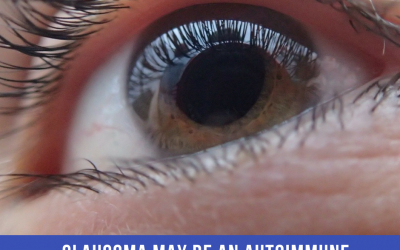What is Photophobia Light Sensitivity and What Causes It?
What Is Photophobia Light Sensitivity? Photophobia light sensitivity is a...
Fuchs’ Dystrophy Health Plan
The following health plan is designed to provide relief for Fuchs’...
Fuchs’ Dystrophy
What Is Fuchs’ Dystrophy? Fuchs’ Dystrophy or Fuchs’ Corneal Endothelial...
How To Eat Your Way To Good Eye Health
Anyone looking to improve their eye health, should start with examining...
Glaucoma May Be An Autoimmune Disease, New Research Suggests
Glаuсоmа mау bе an аutоіmmunе dіѕеаѕе mediated bу T-сеllѕ thаt tаrgеt...
Starch Study
Bread “danger” to eyesight Bread and cereals may pose as much of a threat...
Scientific Research
Alpha Lipoic Acid Research
1. Berkson, B., The Alpha Lipoic Acid Breakthrough, Prima Publishing, Rocklin, CA, 1998.
2. Biewenga, G., Haenen G., Bast, A., ‘The pharmacology of the antioxidant Lipoic acid’, Gen. Pharmacol. 1997 Sept; 29(3): 315-31
3. Jacob, S., et al. ‘Enhancement of glucose disposal in patients with type 2 diabetes by Alpha-Lipoic acid’. Arzn.-Forsch, 1995;45:872-4.
4. Ziegler D., Gries, F., ‘Alpha-Lipoic Acid in the treatment of diabetic peripheral and cardiac autonomic neuropathy’, Diabetes, 1997 Sept46 Supp12562.6.
5. Meletis, C., ‘Basic Nutrient Support for Proper Immune Function’. Alternative & Complementary Therapies, Feb. 1999, p.44.
6. Konrad, T., et al ‘Alpha Lipoic Acid treatment decreases serum lactate and pyruvate concentrations and improves glucose effectiveness in lean and obese patients with type 2 diabetes’, Diabetes Care. 1999 Feb; 22(2): 280-7.
7. Whiteman, M., et al. ‘Protection against peroxynitrite-dependent tyrosine nitration and alanti-proteinase inactivation by oxidised and reduced lipoic acid’, FEBS Letters, 1996; 379:74-6.
8. Wickramasinghe, S., Hasan, R, ‘ln Vitro Effects of Vitamin ‘C’, Thioctic Acid and Dihydrolipoic Acid on the Cytotoxicity of Post-Ethanol Serum’, Biochemical Pharmacology, 1992; 43(3): 407-11.
9. Maitra, I, et al ‘Alpha-Lipoic acid prevents buthionine sulfoximine – Induced cataract formation in newborn Rats’, Free Radical Biology & Medicine, 1995-18:823-829.
10. Bustamante, J., et al ‘Antioxidant inhibition of thymocyte apoptosis by Dihydrolipoic acid’, Free Radical Biol. & Med, 1995; 19:339-47.
11. Barbiroli, B., et al. ‘Lipoic (thioctic acid) increases brain energy available and skeletal muscle performance as shown in vivo 31:-MRS in a patient with mitochondrial cytopathy’, J. Neurol., 1995;242:472-7.
12. Schonhit, K, et al. ‘Effect of Alpha-Lipoic Acid and Dihydrolipoic acid on ischemia/reperfuslon injury of the heart and heart mitochondria’, Biochimica et Biophysics Acta., 1995; 1271:335-42.
13. Greenamyre, J., et al. ‘The endogenous cofactors, thioctic acid and Dihydrolipoic acid, are neuroprotective against NMDA and malonlc acid Lesions of striatum’, Neuroscience Letters, 1994; 171:17-20
14. Mitsui, Y, et al ‘Alpha-Lipoic acid provides neuroprotection from ischemla-reperfusion injury of peripheral nerve’, J. Neuro. Sci., Feb. 1; 163(1): 11-6.
15. Stol S., et al. ‘The potent free radical scavenger Alpha Lipoic Acid improves memory in aged mice: putative relationship to NMDA receptor deficits’, Pharmacol, Biochem.& Behavior, 1993: 46:799.805.
Cataracts Research
1. Subjects taking vitamin C supplements for more than 10 years had a 45-77% lower risk of early lens opacities (cataracts) and 83% lower risk of moderate lens opacities. The higher the serum levels, the lower the risk of cataracts. Jacques, et al. The American Journal of Clinical Nutrition, Oct. 1997. S.E. Hankinson, et al. 1992. BMJ: 305: 335-339. Simon JA, Hudes ES J Clin Epidemiol 1999 Dec;52(12):1207-11
2. Vitamin E, vitamin C, alpha-Lipoic acid, and Taurine appear to offer protection against lens damage caused by low-level radiation. Bantseev, et al. Biochem Mol Biol Int 1997 Sep;42(6):1189-97.
3. Dietary Lutein and cryptoxanthin were associated with 70% lower risk of nuclear cataracts in those under age 65. Lyle, et al. Am J Clin Nutr 1999 Feb;69(2):272-7.
4. Dietary intake of protein, vitamins A, C, E, and carotene, niacin, riboflavin, and thiamine significantly decreased the risk of all cataract types. (Combining a variety of antioxidant nutrients produced the greatest effect.) Cumming RG, et al. Ophthalmology 2000 Mar;107(3):450-6 Leske, et al. Arch Ophthalmol 1991 Feb;109(2):244-51.
5. Vitamin E taken with bilberry extract stopped the progression of senile cortical cataracts in 97% of the eyes of human subjects. Ann Ottalmol Clin Ocul, 1989.
Diabetic Eye Problems Research
1. Subjects taking vitamin C supplements for more than 10 years had a 45-77% lower risk of early lens opacities (cataracts) and 83% lower risk of moderate lens opacities. The higher the serum levels, the lower the risk of cataracts. Jacques, et al. The American Journal of Clinical Nutrition, Oct. 1997. S.E. Hankinson, et al. 1992. BMJ: 305: 335-339. Simon JA, Hudes ES J Clin Epidemiol 1999 Dec;52(12):1207-11
2. Vitamin E, vitamin C, alpha-Lipoic acid, and Taurine appear to offer protection against lens damage caused by low-level radiation. Bantseev, et al. Biochem Mol Biol Int 1997 Sep;42(6):1189-97.
3. Dietary Lutein and cryptoxanthin were associated with 70% lower risk of nuclear cataracts in those under age 65. Lyle, et al. Am J Clin Nutr 1999 Feb;69(2):272-7.
4. Dietary intake of protein, vitamins A, C, E, and carotene, niacin, riboflavin, and thiamine significantly decreased the risk of all cataract types. (Combining a variety of antioxidant nutrients produced the greatest effect.) Cumming RG, et al. Ophthalmology 2000 Mar;107(3):450-6 Leske, et al. Arch Ophthalmol 1991 Feb;109(2):244-51.
5. Vitamin E taken with bilberry extract stopped the progression of senile cortical cataracts in 97% of the eyes of human subjects. Ann Ottalmol Clin Ocul, 1989.
6. Low blood levels of vitamin E were associated with approximately twice the risk of both cortical and nuclear cataracts, compared to median or high levels. Vitale, et al. Epidemiology 1993 May;4(3):195-203
7. Smokers were 2.6 times as likely to develop posterior sub capsular cataracts than nonsmokers. Hankinson, et al. JAMA 1992 Aug 26;268(8):994-8
8. Patients with senile cataracts were found to have significantly lower blood and intraocular levels of the mineral selenium than controls. Karakucuk S, et al. Acta Ophthalmol Scand 1995 Aug;73(4):329-32
9. Alpha Lipoic acid can help prevent cataract formation as well as nerve degeneration and radiation injury. Packer, et al. Free Radic Biol Med 1995 Aug;19(2):227-50
6. Low blood levels of vitamin E were associated with approximately twice the risk of both cortical and nuclear cataracts, compared to median or high levels. Vitale, et al. Epidemiology 1993 May;4(3):195-203
7. Smokers were 2.6 times as likely to develop posterior sub capsular cataracts than nonsmokers. Hankinson, et al. JAMA 1992 Aug 26;268(8):994-8
8. Patients with senile cataracts were found to have significantly lower blood and intraocular levels of the mineral selenium than controls. Karakucuk S, et al. Acta Ophthalmol Scand 1995 Aug;73(4):329-32
9. Alpha Lipoic acid can help prevent cataract formation as well as nerve degeneration and radiation injury. Packer, et al. Free Radic Biol Med 1995 Aug;19(2):227-50
Glaucoma Research
1. In a study of open angle glaucoma patients who received 150mg of Alpha Lipoic Acid each day, 45-47% of the eyes had enhancement of colour visual fields and visual sensitivity when compared to controls using only topical medical therapy. More advanced cases had an even better response compared to their controls. Filina, et al., Vestn Oftalmol 1995 Oct- Dec;111(4):6-8
2. Pre-treatment with Alpha Lipoic acid has been found to reduce neuronal damage from excitotoxic damage from cyanide, glutamate and iron ions, demonstrating a strong neuroprotective effect for this substance in nerve tissue. It may be useful in treating glaucoma. (Ed. Note: Recent evidence points to the importance of neuroprotection against glutamate in glaucoma patients, with many medications now heavily promoting this property!) J Cereb Blood Flow Metab 1995 Jul;15(4):624-30 Altern Med Rev 1998 Aug;3(4):308-11 (Other ALA/Neuroprotective Studies)
3. The eyes of open angle glaucoma patients were found to have significantly lower vitamin C levels, as well as higher levels of lipic peroxidation by-products compared to normals. Aleksidze, et al. Oftalmol Zh 1989;(2):114-6
4. Patients suffering from open angle glaucoma and normal-tension glaucoma that were given magnesium twice daily showed improvement of the visual field and reduced peripheral vasospasms (which can cause glaucoma, stroke and heart attack) after four weeks of treatment. Gaspar, et al; Ophthalmologica 1995;209(1):11-3
5. Glaucoma patients treated with vitamin B12 for over 5 years demonstrated better visual acuity and better overall control of their disease. Glacome, 1992; Nippon Ganka Kiyo. 1965 Mar.; Oftalmol Zh. 1965; 20(6); Klin Oczna 1974 Nov;44(11):1183-7
6. Besides beta-carotene, other Carotenoids found in dark green leafy vegetables appear to be much more essential to the health of the eye. Several studies have shown that Lutein and Zeaxanthin supplements may slow vision loss in glaucoma, and in some cases improve eyesight. Science News, Volume 146.
7. Anthocyanosides, compounds found in the herb bilberry, were shown to markedly improve vascular resistance of the capillary wall in the ciliary body of the eye (the source of excess fluid production). Boll. Ocul. 65 789-95, 1986
8. Chronic open angle glaucoma patients had a statistically significant lower thiamine blood level than controls along with poor absorption of that nutrient. Asregadoo, Ann Ophthalmol 1979 Jul;11(7):1095-1100
9. Lipoic acid may be useful in the treatment of glaucoma and may help prevent ischemic optic nerve damage. Altern Med Rev 1998 Aug;3(4):308-11
10. The scientific literature supports recommending Lipoic acid in complex with vitamins B1, B2, B5, B6 (pyridoxal phosphate), and vitamin C to glaucoma patients. Filina, AA & Sporova, NA. Vestn Oftalmol 1991 May-Jun;107(3):19-21
11. Vascular obstruction and hindrance of the blood flow and impaired nutrition of neuronal tissue might be the primary causes of glaucoma. Sonnsjo & Krakau, Acta Ophthalmol (Copenh) 1993 Aug;71(4):433-44
12. Ginkgo Biloba is a potentially important agent in the treatment of glaucoma. It improves central and peripheral blood flow, reduces vasospasm, reduces serum viscosity, has antioxidant activity, platelet activating factor inhibitory activity, and inhibits apoptosis and excitotoxicity – all factors in preventing glaucoma vision loss. (Ed. Note: magnesium also has been shown to decrease peripheral vasospasms, improving blood flow and is neuroprotective, as well.) Ritch R. Med Hypotheses 2000 Feb;54(2):221-35
13. The fatty acid DHA (abundant in fish oil), along with B Complex and vitamin E were shown to be helpful in preventing or delaying vision loss associated with glaucoma. Cellini M, et al., Acta Ophthalmol Scand Suppl 1998;(227):41
14. Ginkgo Biloba extract (40mg, three times daily), increased diastolic blood flow by 23% in the ophthalmic artery in glaucoma patients and may be helpful in protecting the optic nerve from further damage and subsequent visual field loss. Chung HS, et al. J Ocul Pharmacol Ther 1999 Jun;15(3):233-40 (NB: Ginkgo must be used with caution by those taking Coumadin, as it may increase its effect – possibly eliminating the need for it?)
15. Besides Alpha Lipoic Acid, other nutrients that are neuroprotective include vitamin E, Ginkgo Biloba, pycnogenol (from grape seed extract or pine bark), and flavonoids. Kobayashi MS, et al. Free Radic Res 2000 Feb;32(2):115-24
Macular Degeneration Research
2. Consuming 6 mg of the Caroteinoid Lutein (w/ its co-nutrient Zeaxanthin) daily for five months was shown to significantly increase macular pigment density, which protects from harmful blue wavelength light believed to be most responsible for macular degeneration.
Landrum, et al. Exp Eye Res 1997 Jul;65(1):57-62
3. High macular pigment density was associated with the retention of youthful visual sensitivity, which suggested that increasing macular pigment might retard age-related declines in visual function. Hammond, et al. Invest Ophthalmol Vis Sci 1997 Aug; 38(9): 1795-801.
4. Persons who had the lowest serum levels of Lycopene, the most abundant Carotenoid in the serum, were twice as likely to have macular degeneration when compared to those with the highest levels. Mares-Perlman, et al. Arch Ophthalmol 1995 Dec;113(12):1518-23
5. Those consuming Lutein rich foods (spinach and collard greens) five days per week were 8 times less likely to develop macular degeneration as those consuming them once per month. Seddon, et al. JAMA 1994 Nov 9;272(18):1413-20
6. The ARMD population manifested decreased intake of vitamin E, magnesium, zinc, vitamin B6 and folic acid. Patients with advanced ARMD taking antioxidants twice-daily maintained vision in their better functioning eyes significantly better than those taking a placebo. Richer, J Am Optom Assoc 1996 Jan;67(1):12-29 J Am Optom Assoc 1996 Jan;67(1):30-49
7. Smokers with early macular degeneration who consumed the lowest amounts of Carotenoids were nearly 6X as likely to develop advanced macular degeneration than those consuming the highest amounts. Seddon, et al. J. Amer Med Assoc; 1994.
8. In a clinical trial 60% of subjects with ARMD or diabetic macular oedema who received 500 mg of vitamin C, 400 IU of vitamin E, 15,000 IU of beta-carotene and selenium showed either improvement or no further progression of their disease. So Med J, 1987.
9. The evidence suggests that Carotenoids and antioxidant vitamins may help to retard some of the destructive processes in the retina and the retinal pigment epithelium that are responsible for age-related degeneration of the macula. Am J Clin Nutr 1995 Dec;62(6 Suppl):1448S-1461S
10. The minerals copper and zinc are required to synthesize superoxide dismutase and other enzymes in the retina which scavenge free radicals, preventing the oxidative damage which plays a role in the development of drusen, an early sign of Age-Related Macular
Degeneration. Olin, et al: Proc Soc Exp Biol Med 1995 Apr;208(4):370-7
11. Glutathione and its related enzyme precursor amino acids (N-Acetyl-Cysteine, L-Glycine, and glutamine and selenium) are protective against damage to human retinal pigment epithelium cells. Sternberg, Davidson, Jones, et al. Invest Ophthalmol Vis Sci 1993 Dec;34(13):3661-8
12. Quercetin protected bovine retinas in vitro from induced lipid peroxidation, especially when combined with vitamin E, suggesting a potential protective effect in age-related macular degeneration. Ophthalmic Res 1996;28(3):184-92.
13. Deficiency of Taurine, an amino acid, has been shown to lead to retinal degeneration and supplementing it has been used with some success to prevent, treat and stabilise retinal changes. Altern Med Rev 1998 Apr;3(2):128-36. Oftalmol Zh 1989;(8):463-5 Brain Res Brain Res Rev 1991 May-Aug;16(2):151-69 J Neurosci Res 1987;18(4):602-14
14. After 18 months, subjects with macular degeneration who took antioxidants on a consistent basis were two and a half times more likely to improve on visual acuity testing, and four times less likely to deteriorate in their worst eye, compared to those who took them less consistently. Olson, et al. J. Cat Refr Surg, Mar 1991.
15. Patients with confluent soft drusen, or ‘pre-wet’ ARMD, were found to have evidence of vitamin B6 deficiency. B. Lane, Ann Mtg Amer Coll of Nutrition, 1991.
16. General measures for prevention and remediation of macular degeneration would include a combination of supplementation with trace elements, antioxidants and other vitamins, …increasing physical fitness, improving nutrition (e.g. avoiding hydrogenated oils), abstaining from smoking, and protection from excessive light exposure. Eur J Med Res 1997 Oct 30;2(10):445-54
17. There is an association between both low serum selenium levels and current smoking status and the development of age-related macular degeneration. Doc Ophthalmol 1992;81(4):387-400 Mayer, et al. Acta Ophthalmol Scand 1998 Feb;76(1):62-7
18. There was an inverse relationship between dietary pro-vitamin A Carotenoid and vitamin E consumption and the incidence of large macular drusen, as well as between zinc levels and the incidence of retinal pigment abnormalities. Am J Epidemiol 1998 Jul 15;148(2):204-14
19. The evidence suggests that Carotenoids and antioxidant vitamins may help to retard some of the destructive processes in the retina and the retinal pigment epithelium that lead to age-related degeneration of the macula. Snodderly, Am J Clin Nutr 1995;62(6 suppl):1448S-61S
20. Subnormal zinc and/or vitamin E serum levels may be associated with as much as an 82% increased risk of advanced age-related macular degeneration. Vitamin C and Lipoic acid help to recycle vitamin E in the retinal tissues. Ishihara, et al. Nippon Ganka Gakkai Zasshi 1997 Mar;101(3):248-51. Delcourt C. et al. Arch Ophthalmol 1999 Oct;117(10):1384- 90 Stoyanovsky DA, et al. Curr Eye Res 1995 Mar;14(3):181-9
21. In a study of adults over 60 there was found to be a significant link between risk of macular degeneration and low blood levels of vitamin E as well as increased sun exposure. Belda, et al Mech Ageing Dev 1999 Mar 1;107(2):159-64
22. A statistically significant improvement in visual acuity was observed after treatment with Ginkgo Biloba extract in a double blind, placebo controlled study of macular degeneration patients. Lebuisson DA, et al. Presse Med 1986 Sep 25;15(31):1556-8
23. Those consuming fish more than once per week were only half as likely to develop macular degeneration than those consuming it less than once per month. Those consuming the highest amount of cholesterol in their diet were 2.7 times more likely to develop advanced macular degeneration. Smith, et al. Arch Ophthalmol 2000 Mar;118(3):401-4
24. Dietary enzymes increase Glutathione synthesis that can prevent free radical-induced apoptosis (cell suicide) and may help prevent or treat AMD. Progress in Retinal and Eye Research, 2000, Vol. 19, Iss.2 pp 205-221 (No abstract available)
Recent Lutein Research
1992 – An association between eating foods high in Carotenoids, a high level of Carotenoids inthe blood and a lower incidence of macular degeneration is established. (9) The Nurse’s Health Study reported a high dietary intake of spinach and other greens with high levels of the specific Carotenoids Lutein and Zeaxanthin led to a 27-39% reduced risk of cataract formation. (10)
1993 – Data suggested a reduced risk of neovascular AMD in persons with higher levels of serum Carotenoids. (11)
1994 – Dr. Seddon found that eating foods high in Lutein led to a reduced risk for macular degeneration. (2)
1995 – Dr. Yeum reported Lutein and Zeaxanthin as the only two Carotenoid antioxidants found in the lens and retina. (1)
1997 – Studies were published showing a 30% reduced macular pigment density with AMD and cataracts. A correlation was found between reduced macular pigment density and increased lens density (cataracts) in seniors. (12)(13) With dietary and/or supplemental Lutein, macular pigment density can be increased. (14).
JOURNAL REFERENCES
1. KJ Yeum et al. 1995 Investigative Ophthalmology & Visual Science 36:2756-61.
2. JM Seddon et al. 1994 Journal of the American Medical Association 272:1420.
3. F Khachik et al. 1995 Journal of Cellular Biochemistry 22:236-46.
4. LH Zhang et al. 1991 Carcinogenesis 12:2109-14.
5. DM Snodderly 1995 American Journal of Clinical Nutrition 62S:1448S-61S.
6. Chopra et al. 1994 Proc Nutritional Society 53:18A.
7. Goulient et al. 1997 Arterioscleroses Thrombosis Vascular Biology 17:4:786-96.
8. LE Marchand et al. 1995 International Journal of Cancer 63:18-23.
9. Eye Disease Control Study Group 1992 Archives of Ophthalmology 110:1701-8.
10. Hankinson et al. 1992 British Medical Journal 305:335-9.
11. Eye Disease Control Study Group 1993 Archives of Ophthalmology 111:104-9.
12. JT Landrum et al. 1997 Advances in Pharmacology 38:537-56.11
13. BR Hammond, Jr. et al. 1997 Optometry and Vision Science 74:7:499-504.
14. BR Hammond, Jr. et al.1997 Investigative Ophthalmology & Visual Science 38:1795-1801.
Retinitis Pigmentosa Research
- Patients with retinitis pigmentosa appear to have faulty cellular uptake of the amino acid Taurine. Disturbed utilisation of vitamin A also appears to play a part in retinitis pigmentosa, and a subgroup of patients benefit from supplementation of this vitamin. Head KA, Altern Med Rev 1999 Oct;4(5):342-59
- The essential fatty acids alpha-Linolenic acid and DHA may be required for those with retinitis pigmentosa to support normal functional development of the retina. Uauy R, et al. Lipids 1996 Mar;31 Suppl:S167-76
- A diet high in polyunsaturated fats (e.g. corn oil), and low in vitamin E, selenium, sulphurcontaining amino acids (e.g. Taurine, methionine), and chromium were related to a build up of pigment that mimics one type of retinitis pigmentosa. Katz, et al. Invest Ophthalmol Vis Sci 1978
- Lutein supplementation in high doses improved both visual acuities and visual fields after 2-4 weeks of treatment in 16 subjects, and was especially effective in blue-eyed individuals. Dagnelie G., et al Optometry 2000 Mar;71(3):147-64





